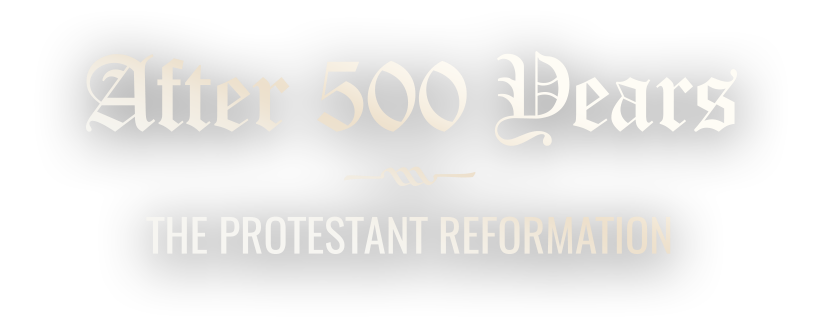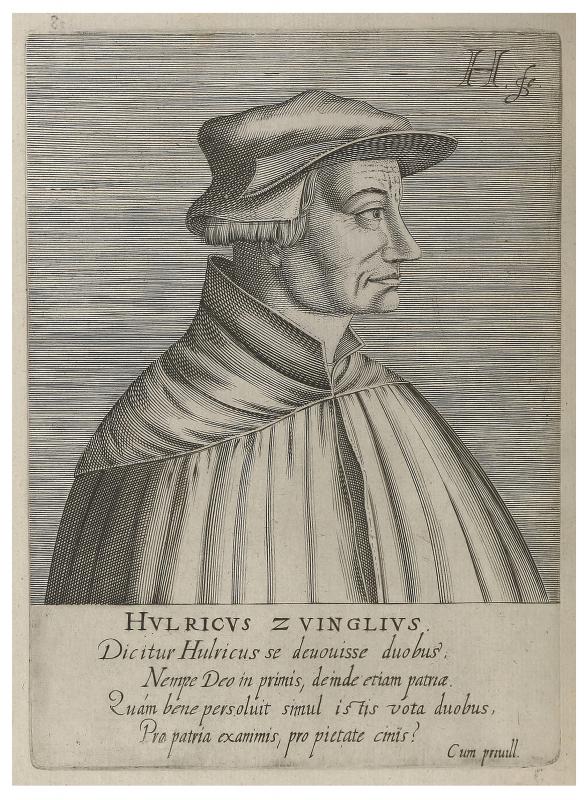Other Reformers: The Diversity of the Protestant Movement
The sixteenth century was alive with religious reformers.
Through the ages of Christianity, men and women have arisen who were certain that God speaks most truly, most urgently through them. This occurred during and after the early Reformation just as it had throughout the Middle Ages. Within this context, it is no wonder that the Martin Luther who considered himself as God’s instrument in bringing biblical truth back to light, had to contend with equally self-confident personalities such as the mystics Andreas Bodenstein von Karlstadt (1486-1541) and Thomas Müntzer (1489-1525); the Swiss divine Huldrych Zwingli (1484-1531) and his German confrere Johannes Oecolampadius (1482-1531); any number of Anabaptists; a range of freethinking Spiritualists and Anti-Trinitarians; and, that man whose mark upon Europe was most indelible, John Calvin. This brief list does not even mention these men’s Catholic counterparts, such as that incomparable humanist and promoter of “the philosophy of Christ,” Erasmus of Rotterdam (1466/1469-1536), and the founder of the Society of Jesus, Íñigo (Ignatius) de Loyola (1491-1556), whose imprint upon the southern part of the subcontinent remains visible to this day. The sixteenth century was alive with religious reformers.
What consigned most of them to peripheral status was their failure to win the official backing of their governors, whether princes or urban magistrates. The agendas of Luther, Zwingli, and Calvin became established in their respective political entities. Establishment gave their visions staying power and preserved them in recognizable format down to the present. Secondarily, many were content to accept the guidance of a dominant theologian. They clustered around him and, after his death, identified themselves as his followers.
Some subordinate figures stand out, nevertheless. Philipp Melanchthon (1497-1560), who came to Wittenberg in his early twenties as a veritable prodigy in Greek, immediately impressed Luther with his intellectual versatility, his acceptance of his senior’s theological guidelines, and his congenial temperament. Soon the newcomer was lecturing on the Bible, consulting on the curricular reform of the university, and standing by Martin’s side in every aspect of revising the concrete practice of Christianity in Ernestine Saxony. Luther, Melanchthon, the Wittenberg pastor Johannes Bugenhagen (1485-1558), and canon law professor and theologian Justus Jonas (1493-1555) formed the core of a group whom the electors of Saxony called together for a range of ecclesiastical advice. Bugenhagen himself was the reformer of many north German cities and principalities—Brunswick (city), Hamburg, Lubeck, the Duchy of Pomerania, East Frisia, Denmark (where he crowned King Christian III), Schleswig-Holstein (two duchies held by the king of Denmark), Brunswick-Wolfenbuttel (sub-duchy), and Hildesheim. He composed their church ordinances.
In the Swiss cantons, Zwingli’s premature death on the battlefield in 1531 brought the capable Heinrich Bullinger (1504-1575) to the fore. Bullinger brought the Zurich reform to fruition and wrote the Helvetic Confessions of 1536 and 1566. John Calvin’s preeminence within the city of Geneva between 1541 and his death in 1564 has had the effect of overshadowing the career of Pierre Viret (1511-1571). Viret was a tireless preacher and converter of the masses to the Reformed faith, a central reformer in Lausanne, and a founder (in Lausanne) of what at its transfer would become the Genevan Academy in 1559. During the last decade of his life, he labored among the Huguenot communities of southern France.
No selection of other reformers could omit Martin Bucer (1491-1551) of Strasbourg. Bucer struggled to find a unifying solution to the problem of confessional division among Protestants. He thought he had succeeded in achieving it in the Wittenberg Concord of 1536, to whose weasel-wording even Martin Luther briefly acceded. Bucer’s perceived triumph was short-lived; the Reformed dealt it its death blow. He even envisioned a Catholic-Lutheran German church. He is remembered as an early ecumenist in an age of militant religious divisions. Forced out of Strasbourg in 1549 as a result of the Augsburg Interim, Bucer took refuge in England. During his two-year sojourn there, he may have exerted influence on the Edwardian phase of the Reformation.
The category of “other reformers” should contain a representative of that diverse body of nonconformists called Anabaptists. The nature of that movement to postpone baptism until an adult Christian declared his or her belief and controlled behavioral impulses accordingly, was such that numerous men, often self-appointed leaders, presided over small groups of followers. A list of their names would fill several pages. One of them, Menno Simons (1496-1561), a Catholic priest from Friesland, was astonished to read the Bible years after his ordination and discover that infant baptism was not mentioned. He joined the Anabaptists. His adherents multiplied, found relative safety in the new nation (1581) of the United Provinces of the Netherlands, and are known as Mennonites in the modern world. As a body, they tend toward pacifism.
To cite text:
Karant-Nunn, Susan, & Lotz-Heumann, Ute (2017). Confessional Conflict. After 500 Years: Print and Propaganda in the Protestant Reformation. University of Arizona Libraries.
Selected titles from University of Arizona Special Collections:
Caspar Schwenckfeld (1489-1561). Epistolar, Frankfurt, 1566-1570
Ulrich Zwingli (1484-1531). Opera, Zurich, 1544-1545
Jean Calvin (1509-1564). Commentarii, Geneva, 1565
Philipp Melanchthon (1497-1560). Chronicon carionis, Bern, 1601

